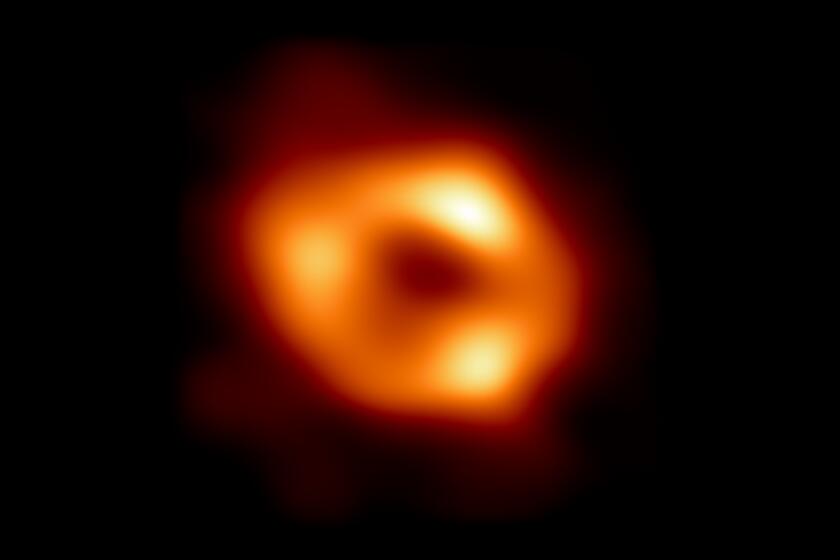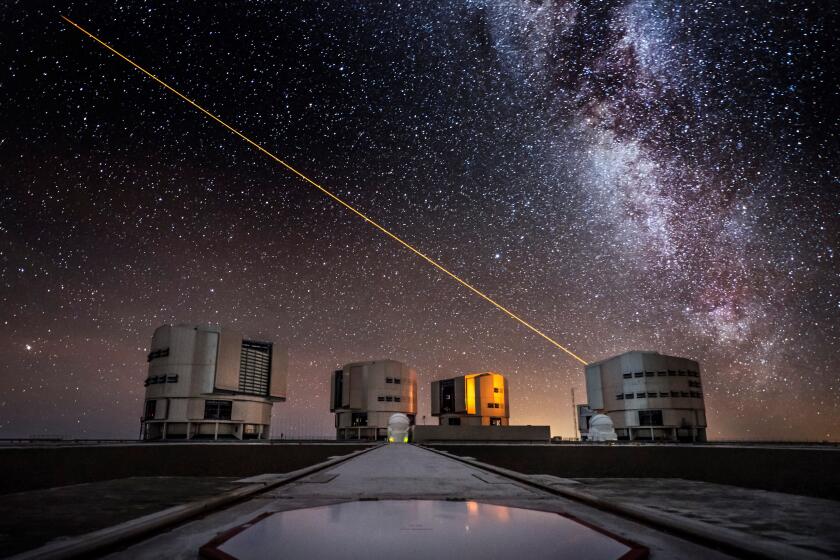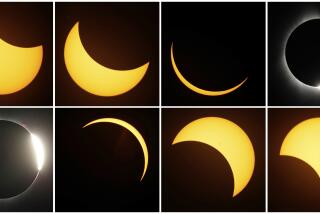Q&A: She discovered the black hole at the center of our galaxy. This week, she finally saw it
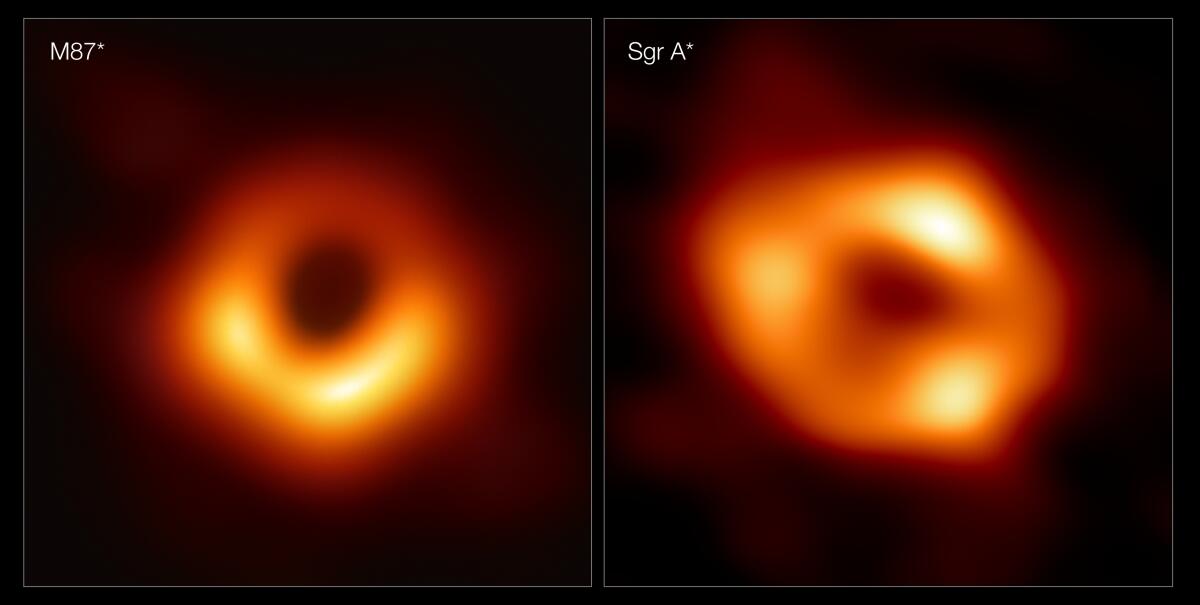
This week, the world got its first-ever look at Sagittarius A*, the supermassive black hole in the center of our galaxy. The image of a hazy golden ring of superheated gas and bending light was captured by the Event Horizon Telescope, a network of eight radio observatories scattered across the globe.
Feryal Özel, a University of Arizona astronomer and founding member of the EHT consortium, said that seeing the black hole’s image was like finally meeting in real life a person you’ve only interacted with online.
For Andrea Ghez, an astrophysicist at UCLA, the encounter was perhaps more like a biographer meeting her subject after decades of pursuit.
In 2020, Ghez was awarded the Nobel Prize in physics for her role in the discovery of a supermassive object at the core of the Milky Way. That object is now known to be Sagittarius A*, or Sgr A* for short.
Astronomers have unveiled the first image of the supermassive black hole at the center of our Milky Way galaxy.
Ghez studies the center of our galaxy and the orbits of thousands of stars encircling the dense object at its very heart. Though she wasn’t involved with the EHT project, she said its “impressive” achievements — including its 2019 unveiling of the black hole anchoring a distant galaxy known as Messier 87 — offer intriguing new possibilities for the study of the cosmos.
The Los Angeles Times spoke to her about black holes, cosmic surprises and what Einstein has to do with the GPS app on your phone. The interview has been edited for length and clarity.
How does it feel to finally lay eyes on the thing you’ve spent your career studying?
It’s super exciting. We live in a really interesting moment where technology is advancing so rapidly in so many arenas and giving us new insights into these incredibly exotic objects.
Does it look different than you anticipated?
No, actually. It’s remarkably similar. You should see a ring that has a radius that is roughly two and a half times the Schwarzschild radius [the radius of the event horizon, the boundary around a black hole beyond which no light or matter can escape]. That’s the prediction of where gravity should bend, and that’s exactly where you see it. That’s impressive.

How much have technological capabilities changed for researchers since you started studying black holes?
Huge, huge advances. I often say we’re surfing on a wave of technological development. Everything that we do really can be described as technology-enabled discovery.
One of the things that I love about working in these areas where the technology is evolving really quickly is that it affords you the opportunity to see the universe in a way you haven’t been able to see before. And so often that reveals unexpected discoveries.
We’re really lucky that we’re living at this moment where technology is evolving so quickly that you can really rewrite the textbooks. The Event Horizon Telescope is a similar story.
What unanswered questions about the universe excite you most?
I have a couple favorites right now. The one that I’m super excited about is our ability to test how gravity works near the supermassive black hole using stellar orbits, and also as a probe of dark matter at the center of the galaxy. Both of those things should imprint on the orbits.
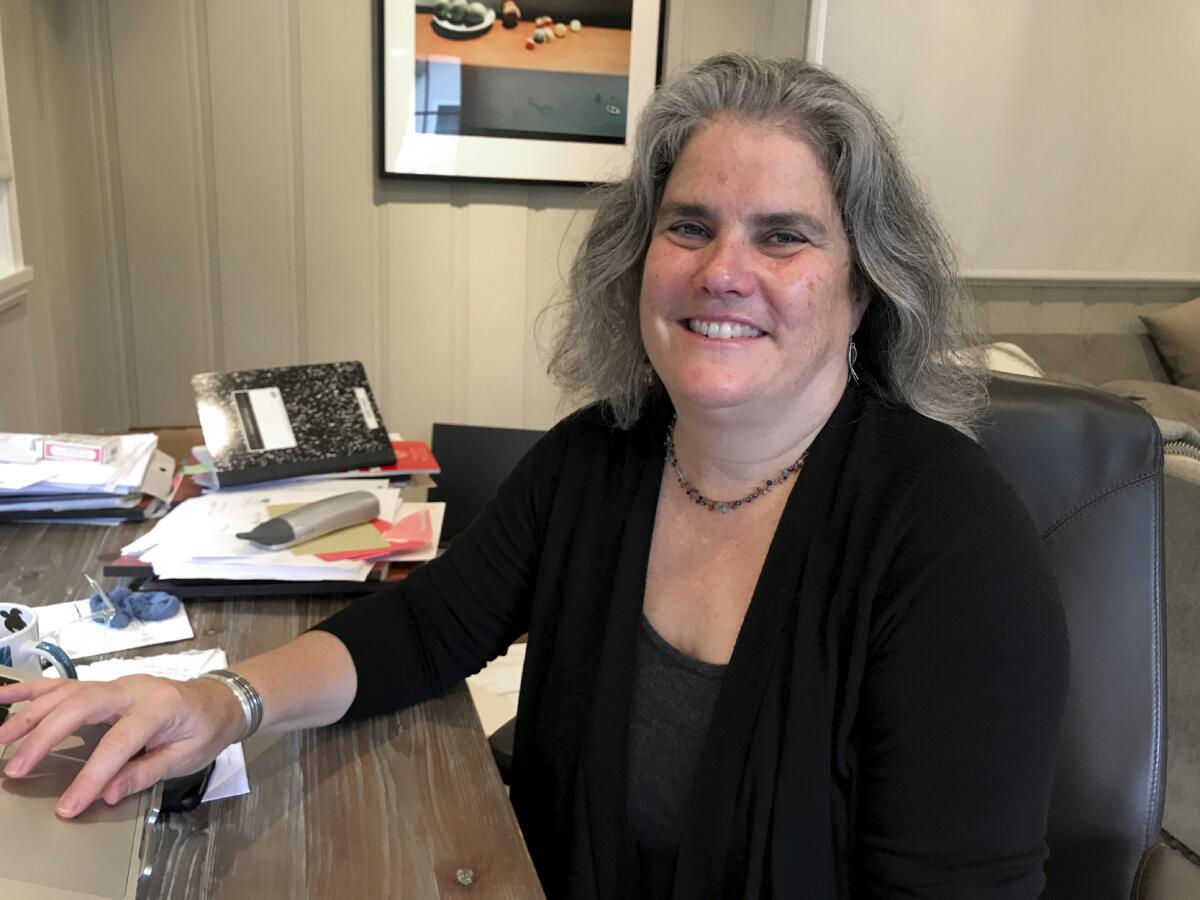
A simple way that I like to think about it is: The first time around, these orbits tell you the shape. And then after that you get to probe more detailed questions because you kind of know where in space the star is.
For example, S0-2 (which is my favorite star in the galaxy, and probably in the universe) goes around every 16 years. Now we are on the second passage, and that’s giving us the opportunity to test Einstein’s theories in ways that are different than what the Event Horizon Telescope is probing, as well as to constrain the amount of dark matter that you might expect at the center of the galaxy. There are things that we don’t understand about the early results, and to me that’s always the most exciting part of a measurement — when things don’t make sense.
What’s your approach in those moments?
You have to have complete integrity with your process. Things may not make sense because you’re making a mistake, which is the uninteresting result, or they may not make sense because there’s something new to be discovered. That moment when you’re not sure is super interesting and exciting.
UCLA professor Andrea Ghez and two other scientists are awarded the Nobel Prize in physics for their pioneering work on black holes.
We’ve just discovered these objects at the center of the galaxy that seem to stretch out as they get close to the black hole, then become more compact. They’re called tidal interactions. If you think of the movie “Interstellar” with that big giant tidal wave, this would be like a big tidal wave that just lifts off the planet. If we’re seeing stars having those kinds of interactions, it means that the star has to be, I don’t know, a hundred times larger than anything we predicted to exist in this region. So that makes you scratch your head.
Does the new image of Sgr A* reinforce your finding that, for now, Einstein’s theory of general relativity seems to do the best job of explaining how gravity operates throughout the universe?
Yes. Absolutely. Black holes represent the breakdown of our understanding of how gravity works. We don’t know how to make gravity and quantum mechanics work together. And you need those two things to work together to explain what a black hole is, because a black hole is strong gravity plus an infinitesimally small object.
Wait, what? I thought black holes were huge.
No. The image is of the phenomena that happens around the black hole. The black hole has no finite size, but there is this abstract size of the event horizon, which is the last point that light can escape. And then the gravitational interaction with local light gets concentrated in this ring that’s two-and-a-half times bigger that the event horizon.
In the swirling heart of a distant galaxy, 55 million light-years from Earth, lies a supermassive black hole with a mass 6.5 billion times greater than that of our sun.
Anyway, we know that black holes represent the breakdown of our knowledge. That’s why everyone keeps testing Einstein’s ideas about gravity there, because at some point you expect to see what you might call the expanded version of gravity, in the same way that Einstein was the expanded version of Newton’s version.
Is it fair to say that Newton’s laws do a decent job of explaining how gravity works here on our little planet, but we need Einstein once we head out into the universe?
Yes, except for what we take for granted today: our cellphones. The fact that we can find ourselves so well on Google or Waze or your favorite traffic app is because GPS systems position your phone with respect to satellites going around the Earth. Those systems have to use Einstein’s version of gravity. So, yes. We could use Newton until we cared about things like this.
